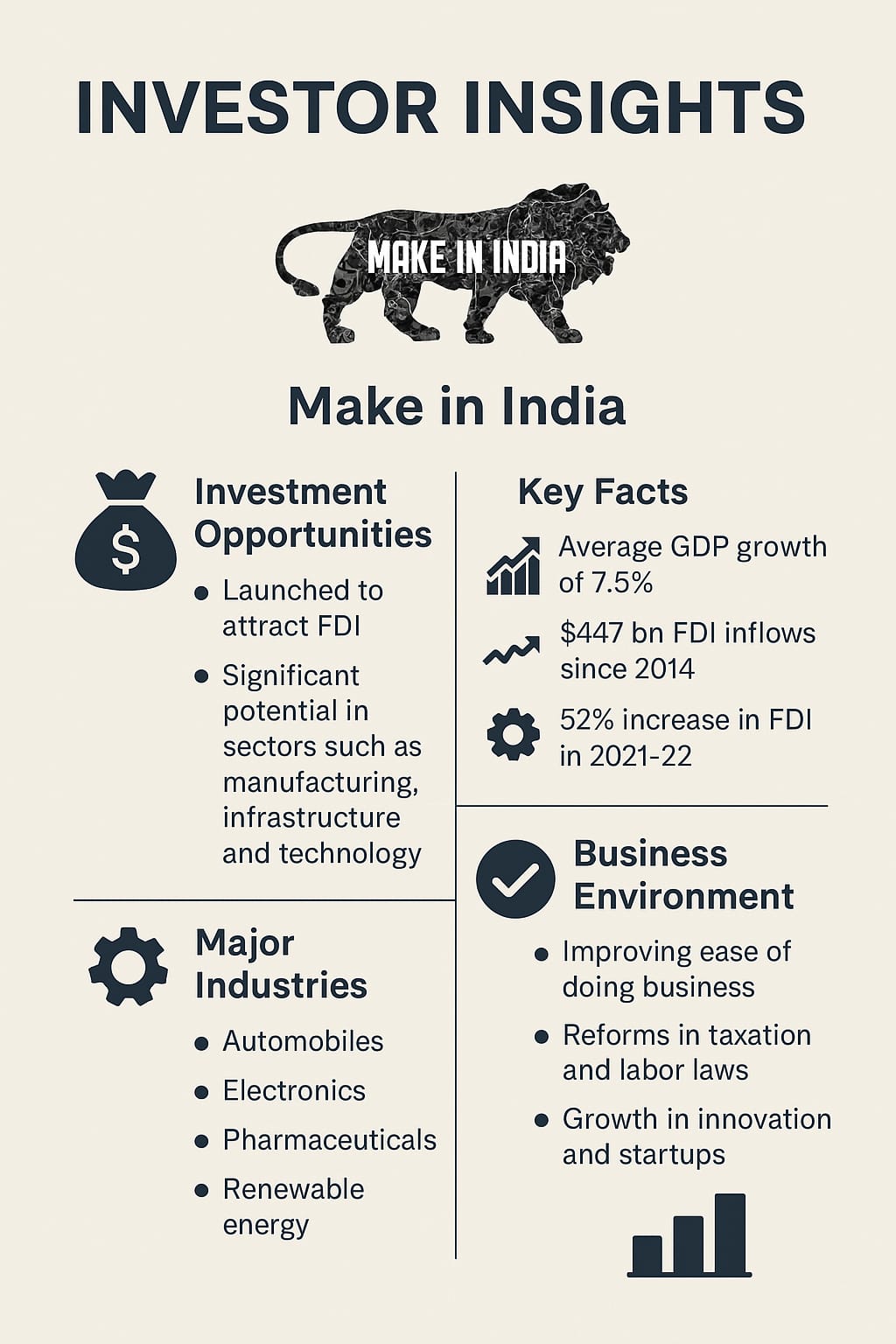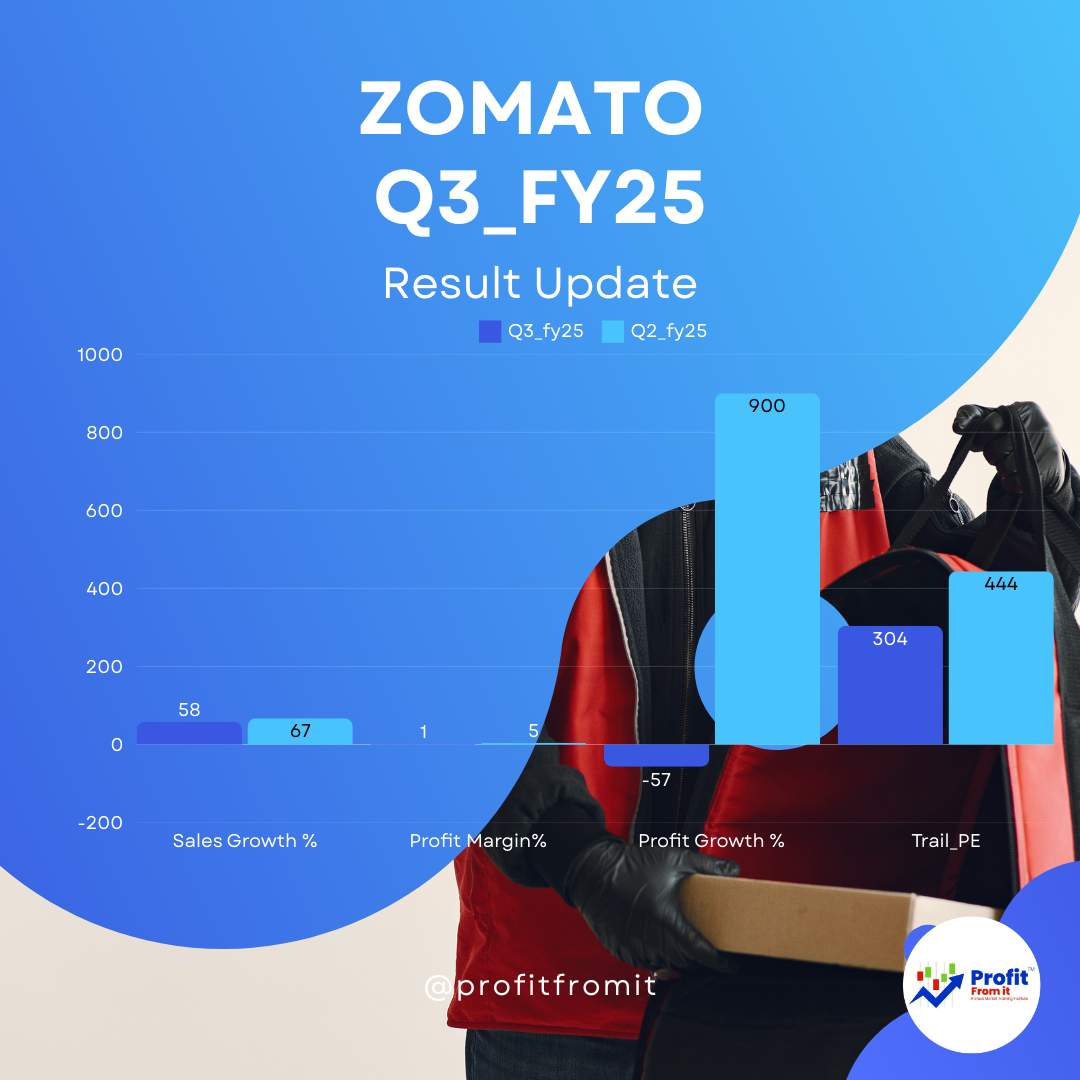
Unlocking Investment Potential: Insights from the 'Make in India' Initiative
📌 Introduction
The 'Make in India' initiative, launched by the Government of India, aims to transform the country into a global manufacturing hub. This strategic movement encourages investment, fosters innovation, and enhances skill development. For investors, it presents a range of opportunities across various sectors. This blog explores the insights from the initiative and how investors can benefit from the growing Indian market.
💰 Investment Opportunities
The 'Make in India' initiative identifies key sectors where foreign and domestic investment is highly encouraged. Some of these include:
✅ Automobile & Auto Components: India is poised to become a global leader in electric vehicles (EVs), with government incentives and a rising demand for sustainable transport. The Indian automobile sector attracted $34 billion in FDI between 2000 and 2023.
✅ Electronics & IT: With policies like the Production-Linked Incentive (PLI) scheme, India is attracting significant investment in semiconductor and electronics manufacturing. The electronics market is projected to reach $300 billion by 2025.
✅ Pharmaceuticals & Biotechnology: The Indian pharmaceutical industry is one of the largest globally, with exports valued at $24.6 billion in 2022. The sector is expected to grow at a CAGR of 11-12% in the coming years.
✅ Renewable Energy: India is rapidly transitioning to clean energy, with a target of achieving 500 GW of renewable energy capacity by 2030. Foreign investment in renewable energy exceeded $10 billion in 2022 alone.
✅ Infrastructure & Smart Cities: Government initiatives in infrastructure development open doors for investors in construction, real estate, and urban planning. India plans to invest $1.4 trillion in infrastructure over the next five years.
✅ Textiles & Apparel: With a strong global demand for Indian textiles, the sector remains a key investment area with government support. India’s textile exports stood at $44 billion in 2022, with further growth expected.
📜 Policy Support and Ease of Doing Business
The Indian government has implemented several reforms to attract investors:
🏦 FDI Liberalization: Several sectors now allow 100% Foreign Direct Investment (FDI) under the automatic route, contributing to total FDI inflows of $84.8 billion in FY 2021-22.
📉 Tax Incentives: Reduced corporate tax rates and sector-specific incentives have been introduced to boost industrial growth.
🏢 Single Window Clearance: A simplified approval process for business establishment and operations has been implemented to improve the ease of doing business.
📍 State-Level Incentives: Various Indian states offer tailored incentives, including tax breaks and subsidies, to attract manufacturing and infrastructure investments.
⚠️ Challenges and Risk Factors
While India presents immense opportunities, investors should be mindful of challenges such as regulatory complexities, infrastructure gaps, and policy implementation hurdles. However, ongoing reforms aim to mitigate these concerns and enhance the investment climate.
🚀 Conclusion
The 'Make in India' initiative is a transformative policy driving India's manufacturing and economic growth. For investors, it offers a wealth of opportunities across diverse industries. With government support and a focus on ease of doing business, India is well-positioned to become a prime destination for global investments.



 for Investors The provided chart outlines key metrics for Nifty 500 companies across different periods (FY22 t.png)





